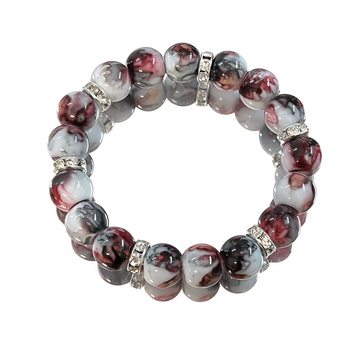The Interplay Between Maintenance and Cultural Legacy of Stone Bangles
Stone bangles, crafted from materials like jade, agate, or soapstone, have been symbols of identity, spirituality, and artistic expression for millennia. Their survival across generations hinges not only on their durability but also on intentional care practices that honor their cultural significance. Below, we explore how maintenance fosters the preservation of heritage while ensuring these artifacts remain vibrant links to the past.
Sustaining Physical Integrity to Honor Craftsmanship
Natural stones are prone to cracking, chipping, or fading if neglected, which can erase intricate carvings or symbolic engravings that define a bangle’s cultural identity. For example, a jade bangle with ancestral motifs loses its storytelling power if its surface becomes pitted or discolored. To prevent this, owners should avoid exposing bangles to extreme temperatures or moisture, which can weaken the stone’s structure. Storing them in breathable fabric pouches, away from direct sunlight, protects against environmental stressors. By maintaining their physical form, these pieces continue to serve as tangible records of ancestral skills and aesthetic traditions.
Preserving Symbolic Meanings Through Ritualistic Care
In many cultures, stone bangles are imbued with spiritual or protective properties. A turquoise bangle might symbolize health in Navajo tradition, while a red coral piece could represent marital harmony in South Asian contexts. Ritualistic cleaning—such as wiping them with herbal-infused water or storing them alongside sacred herbs—reinforces their spiritual resonance. Even secular owners often adopt gentle cleaning routines, like using a soft brush to remove dust, as a way to connect with the bangle’s historical context. These practices ensure that symbolic narratives remain alive, transforming maintenance into an act of cultural reverence.
Facilitating Intergenerational Transmission Through Education
The longevity of stone bangles depends on passing down maintenance knowledge alongside the artifacts themselves. Elders often teach younger generations how to identify authentic materials, recognize signs of wear, or perform age-appropriate restoration techniques. For instance, a family might share stories about how a bangle survived a flood or war, emphasizing that its survival was due to careful storage in a clay jar. By framing care as a collaborative responsibility, families strengthen cultural continuity. This educational aspect transforms maintenance from a mundane task into a ritual of memory preservation.
Adapting Care Practices to Modern Contexts Without Eroding Authenticity
While traditional methods like oiling stones with natural substances remain relevant, modern owners sometimes integrate eco-friendly alternatives, such as using distilled water instead of river water for cleaning. The key is balancing innovation with respect for original techniques. For example, a museum might display a bangle alongside a digital log detailing its conservation history, ensuring transparency without compromising its authenticity. Such adaptations make cultural artifacts accessible to new audiences while acknowledging their timeless value.
By treating maintenance as a dynamic, culturally charged practice, stone bangles transcend their roles as decorative items. They become living embodiments of heritage, where each act of care—whether polishing a surface or sharing its origin story—reinforces their place in a broader historical narrative. This symbiosis of preservation and storytelling ensures that these artifacts endure as bridges between past, present, and future generations.







